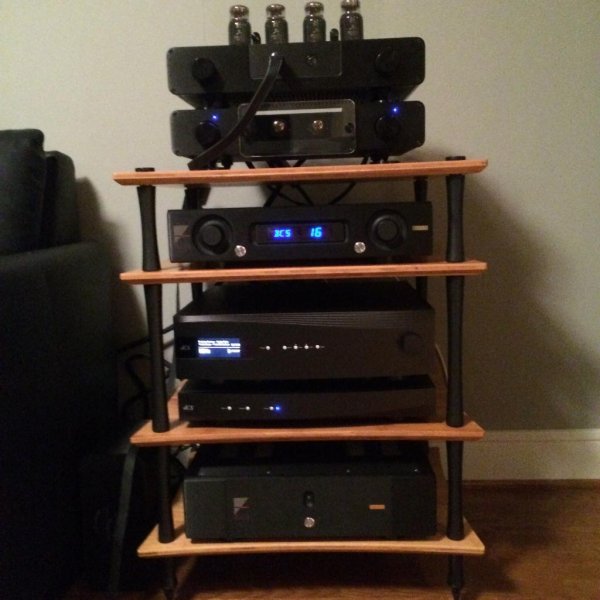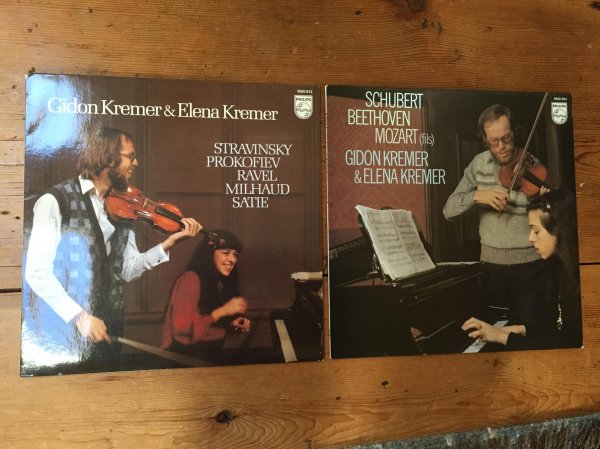Do you know anyone who plays the violin, try recording them playing in your listening room, I am sure you would find the results interesting, make several recordings only altering microphone position.
Keith.
Well I've kicked around a bit with the instrument here and there myself over the years

And like the professionals I have also known, we have always auditioned instruments both under the ear and then had a colleague play them for us at a distance (sound quality is completely different one versus the other). I've only been professionally recorded twice - once as a soloist in the Sydney Opera House concert hall (violin and piano only) and also in a much smaller hall when I was the leader in Saint-Saens Danse Macabre (so a prominent solo role with orchestra). The playbacks were nothing like what I heard under the ear during those performances, but this is an extremely-well known phenomenon amongst stringed instrument players and the reason why under-the-ear and distance comparisons are so important.
It was also something I struggled with greatly as a student when my ear was developing. I would love the sound of the instrument under-the-ear in the practice room then my teacher would bag the instrument (and I did not like hers under-the-ear or even from 6 feet away but at 25 feet it sounded beautiful). I once auditioned a Nicolo Gagliano that again was nothing special under-the-ear but was remarkable from a distance.
Itzhak Perlman once commented that Heifetz sounded (in a concert hall) nothing like he did in his recordings - those RCA Living Stereos are very detailed and are the sorts of analogue recordings that I feel come very close to what a violin (or at least his in particular) sounded like (but not in a concert hall). But as Perlman pointed out, once you are in that hall, the sound takes on a totally different character. Infact, I had never been a Heifetz fan during the thick of the CD era. He just sounded so cold, harsh and steely in all of his CD recordings. But when I started buying all the vinyl reissues, I came to love his playing and sound. Suddenly I could appreciate it for what it really was, not being pummelled by the objectionable CD sound anymore. I've gone back to listen to those CDs in recent times and although they still don't sound right, they are much better on modern gear.
The best recording I have ever heard as regards what a violin really does sound like is a Cisco reissue on vinyl of Heifetz playing the Beethoven Kreutzer sonata. It is exceptional - you really do feel like you are in the room with him. I've heard nothing better in this respect. And if I am impressed with it on a modest Project RPM9 / Rondo Bronze front end, it would be even better again on higher quality gear.
http://store.acousticsounds.com/d/3...ethoven_Kreutzer_Sonata-180_Gram_Vinyl_Record
So far as my comments about 16 bit and violin sound, the closer the mics to the soloist and the less complex the work in terms of instrumentation, the better the result. There is a 1985 Decca recording made by Simon Eaden (Kyung-Wha Chung in recital). This was reissued onto one of those "XRCD" disks a few years back. That recording achieves an excellent result for the CD standard, but crucially it is just violin and piano with close miking in an ambient environment - meaning much detail gets dispersed in the real performance in any case (unlike the dry and damped acoustic of the Heifetz recording mentioned previously) and there is no complex miking nor extreme dynamic range to worry about. Simon told me that Kyung-Wha Chung thought it one of her best ever recordings in terms of capturing the sound of her instrument.
When you have complex orchestral forces in a concerto, however, 16 bit really struggles no matter how you mic the instrument. If you stick a mic a couple of feet away, you are never going to capture a realistic concert perspective but stick them too far away and it amazing how much you will lose with the 16 bit limitation versus the 24 bit limitation. It is the subtle things the audience ear hears at a live performance - even 15 rows back - versus the recording. You lose the minute details of the way the bow and string sounds as the bow direction is changed, you lose timbre and as another poster said, you lose some of that "woody" sound. Unfortunately, however, there is not a massive amount of violin material out there yet that is recorded natively at 24/192 or the best DSD and available to consumers in that format. But what I do have does a better job with a violin than most analogue does and definitely much better than the 16 bit downloads the companies also make concurrently available. So I guess at the present time I could summarise by saying analogue still does violin sound the best in a chamber setting, whilst 16 bit is inferior but competent in such a setting. In the concert hall, 16 bit performs poorly, analogue reasonably well and 24 bit digital very well.
My own recording experience in my own listening room isn't really of any value since I do not own professional recording equipment. I did make some recordings in 2005 I think it was and I used a Sony microphone worth only around $400. I did find it captured the sound best when placed around 4 feet above the violin in a vertical axis and offset by about a foot on the horizontal one (on the "E" string side). Any closer and it accentuated the under-the-ear sound too much and any further away and detail started to get lost. But with an inexpensive microphone and very basic 24 bit gear, this is neither surprising nor is it obviously typical of what a professional engineer would achieve.



